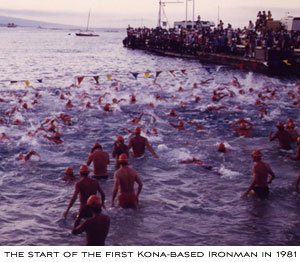Race Registration

There are two categories of registration: online and on-site. Online registration is the domain of companies like Active.com (but not exclusively Active.com).
There's no way to put on a race these days without using an online registration engine. It's silly to try to do otherwise. Yes, you just may be able to do it a buck or so cheaper if you do it yourself, but frankly, it'll cost you a lot more in the end. Why? The reasons are legion.
First, if you want to list all the reasons why triathlon is twice the size now in the U.S. than it was eight years ago, one overriding reason is online registration. The sorry fact is, it's hard to get people to take an affirmative act (how many of you send in all of your rebate coupons?). Online registration is so easy, people will actually register for races where they wouldn't if they had to send it in via mail. This glues them to the process of training for, and showing up to, your race.
If that hasn't convinced you, and you still decide to do paper registration, I can relate to you my stories of improper or incomplete data entry, losing checks, checks bouncing, my databasing software's non-conformity with my timing company's software, and on and on. Add to that the management time you allot to making sure this process is done right, and having to task people with this job instead of having them work on something more critical.
And finally, you'll save money. You don't have to print paper entry forms, except for cheap ones you use for day-before and day-of entry. Most of today's popular races, at least on the West Coast, haven't printed a paper entry in years.
Now that I've convinced you that online registration is the way to go, which company do you use to do this for you? The obvious answer is Active.com. They represent probably 90 percent of the online registration in triathlon.
It's the obvious answer, but not the only answer. An increasing number of people are asking whether the default option is still the best option. One good reason to use Active is you get your race on its calendar. But nowadays it's debatable whether Active's calendar is the place triathletes go to search out events and build their schedules.
Many or most triathletes who use an online calendar as their source will choose the excellent calendars on Trifind.com or Beginner Triathlete, or they'll use the calendar found here on Slowtwitch with it's 1500-plus North American multisport events. Each of these three calendars, along with USA Triathlon's calendar, provide athletes with plenty of options for finding and building their race schedules.
The minefield of clicked boxes one has to unclick, and other boxes and offers one dares not click on the pain of recurring monthly or annual charges, has turned a lot of users off to the Active.com experience. Accordingly, race directors with a lot of races (TriCalifornia, with Wildflower, Escape from Alcatraz, and other popular races; Set-up Events, with 70 races in the Carolinas) have built their own online reg engines. Others have increasingly considered online reg companies that don't send unwanted newsletters to their customers, or offer magazines, wetsuit sales and rentals, and premium subscriptions.
Signmeup.com is one example of many bare-bones online reg services. The fees are in line with those Active charges. In most cases, regardless of the company you choose, you can expect to pay something between 3 and 7 percent of each transaction plus a per charge flat fee of $1 or so. So, if your charge your customers $100 to enter your race, a good bet for budgeting purposes would be to figure 5 percent plus a buck, which in this case would total $6 per head.
One option to consider is burying the cost of the registration into the entry fee. Yes, it bumps up your entry fee. On the other hand, announcing that the entry fee you charge includes the online registration fee will make a lot of your customers very happy, since they often don't know the cost of the service charge until they've gone through the entire registration process, clicking and unclicking boxes, typing in their persona and payment info. If this appeals to you, then you'll need to choose your online reg partner in part on the basis of whether it provides this cost-burying option.
On the other hand, those offerings associated with Active (wetsuit sales, for example), when availed of by your customer, do accrue to you, that is, you the race director get a vig on the wetsuit sales. So, you have to decide what's more valuable to you: the inconvenience some of your customers may feel through having to do business with Active; or the potential financial benefit accruing to you through ancillary sales because you did business with Active.
Okay, that's online registration. Then there's the on-site registration. This you must have even if you only use online registration, and even if you have no registration available at the venue itself on race day or during packet-pickup. On-site registration requires a fairly sizable staff of volunteers. My favorite way to do this is assembly-line style. You've all seen this. Each "station" is specific to a task: you go to the packet pick-up table; then to t-shirt pick-up; waiver signing; goodie bag pick-up; and so forth.
On waiver-signing. If you have online registration, and if you sanction with USA Triathlon, you don't need to worry about the waiver for those annual USAT members who sign up online. They click a box which indicates that they've signed the waiver. But, if you allow people to register at the venue, then you'll almost certainly have to have waivers signed. As for me, my first "station" was always the one where you get the waiver signed.
My waivers used to take up an entire page. Were they long? No. They just had type big enough so that you could read them which, when they're big enough to actually be legible, fill an entire page. Furthermore, they had spaces for the competitors' mandatory initials next to each paragraph. And finally, we had a volunteer whose only job was to ask, "Do you understand everything on the waiver? Do you have any questions about it?"
Next station would be rules. I'd give out a page with the list of the most commonly broken rules, along with the warning: "If you break these rules, we will attempt to catch you, and penalize you. Know the rules, and abide by them. We'd prefer not to penalize anyone, but we'll penalize whomever we catch."
The "rules" station at registration is not typical at triathlons. This is just my personal pet peeve. Riders do not understand that they need to ride on the right and pass on the left. They don't understand that they need to drop back when "overtaken" during the bike ride. So, I have this "rules" station for the explanation of these basic rules, because it's like fingernails on a chalkboard when I enter a race and see all these rules flaunted during the bike leg.
You'll hire a timing company. Choose a company with experience in timing triathlons. Ask what it is you get by hiring them. Perhaps they'll offer a cafeteria menu of services. Choose what you think is important. Do you want to put on an event for a low entry fee? Then don't have your timing company send results to each competitor in the mail (at a cost of anywhere from $1 to $5 a-pop depending on whether it's just a post card or a full set of results).
Do you need chip timing? It's more expensive, by a buck or two per person. For a smaller, lower-key race, a good non-chip timer will do you fine. Do you want to offer transition splits? Is it a larger race? Are you charging a more expensive entry fee? Those are reasons to use chip timing.
When you've apprised your timing company that you're using a notable online registration company they'll be very happy. They won't have to worry about software compatibility, or keying errors (except errors made those who're entering the race) or anything like that. But there's still the issue of getting the database from your online reg engine to your timing company, and then there's late (or race site) registration. For all of this, you'll need to rely on your timing company. In fact, this is what you want. Best if you push as much of it off on them as you can. Ask them how many volunteers they need, and then provide these bodies. Otherwise, the more of the burden they'll take for everything that has to do with getting people's names into the database, the better for you.
But you must ascertain what it is they won't provide. Are they bringing computers and printers? And printer paper? Are they bringing all the computers they need? Both for registration and for chip verification? Are they bringing enough electrical cords? Make sure you know what they'll provide, and what they won't. Make sure they know that if they haven't disclosed what they need from you once they show up, then you aren't providing it, and they must provide it as part of the price they're charging you.
Because you're relying on them, this doesn't mean you abdicate all knowledge of the process. You need to know what's going on. Basically, there are two competing sets of virtues here: You must force accountability on your timing company. Don't allow them a crack through which they can wiggle, whereby they blame you for something not done. At the same time, it's your race. You must keep control. You must set up fail-safe plans, and redundancies. You can't allow control of your business to fall into someone else's hands.
As you go through the process of figuring out what you need, from goodie bag stuffers to T-shirt hander-outers, to twist ties, to safety pins, and everything else, Here is a short, non-comprehensive, list of ideas about which you might think:
* Keep an eye on the money
* Control the waiver and rules processes
* Make sure you order all necessary materials, like swim caps and race numbers, way, way ahead of time.
* Ask to know, with precision, what your timing company will do for you inside the registration room. How many bodies will they bring? What will they do? Will they collect money? Will they take care of registration problems (like, "You placed me in the wrong age-group)? Will they take care of USAT matters, like checking for annual memberships, and charging for one-day licenses?
* If they don't take care of USAT issues, find out from USAT what they'll need from you. Are they bringing anyone to your race? Who collects their money? If it's you who collects it, when are you supposed to collect it? Who collects on-site? When does USAT get its money from you?
* Are you supposed to house personnel from the timing company, from USAT, your referees (and for that matter, your announcer, and whomever else)?
* Realize what a time and energy consuming job stuffing registration bags with goodies is. Assemble your registration staff the week prior to the event for a bag-stuffing party, with pizzas, etc., and make it fun. Make sure you've got all your goodie bag stuff in-house in time for the party.
* Consider redundancies. Is your online reg company sending the database directly to the timing company? Perhaps you ought to have them send it to you as well. Burn it onto a CD and put it in a safe place.
What else goes on during registration? Your expo, for one. If you don't make packet pick-up mandatory the day before the race, your expo is not worth as much to a booth buyer. But, yes, there are people who live an hour away—short enough to drive to the event the morning of, long enough to whine about it if they have to drive two hours round-trip just to pick up a packet they day before. I saw one elegant approach employed by one race organization. They'll Fedex you your package for $25, and then you don't have to come the day before. Otherwise, you've got to come.
Route your registration foot traffic so that it goes through the expo on the way to packet pick-up and, hopefully, through the expo on the way back out again.
Registration is also the time for pre-race meetings. Who comes to these? Probably a third to half of your competitors. The shorter and more interesting you make it, the more people will show up. I'd have these pre-race meetings every hour, on the hour, and limit them to 15 minutes. If your head ref (or whomever) can't do it in 15 minutes, find someone who can. If people still want to ask inane questions, fine. There's 45 minutes until the next meeting.
Registration is chaos. It's also dangerous, from a liability standpoint. Don't enter this process unprepared. Don't get to pre-race day understaffed. You've got one chance to do this, so do it right.




Start the discussion at slowtwitch.northend.network